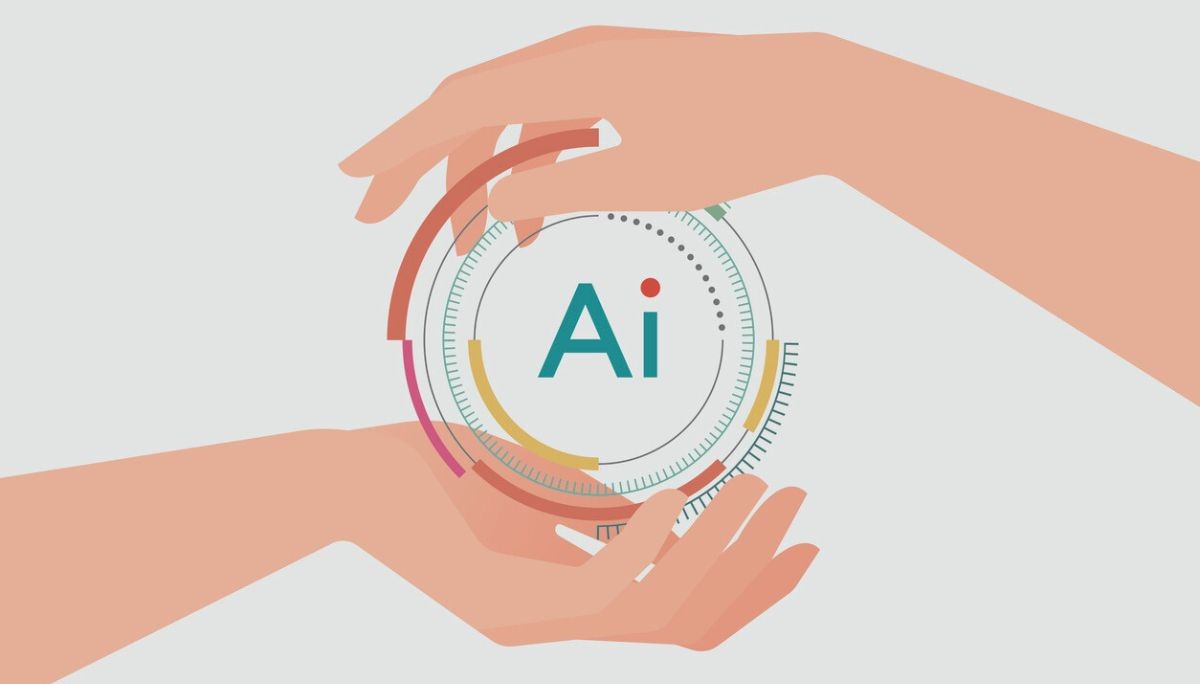What Software Do Engineers Use? A Breakdown by Field
By
Liz Fujiwara
•
Sep 3, 2025
Searching for the best software for engineers? This article highlights the key tools used across various engineering fields to streamline workflows and boost productivity. From project management and design to simulation, data analysis, and team collaboration, these essential software solutions help engineers tackle complex challenges more efficiently. Whether you are a mechanical, civil, electrical, or software engineer, understanding and leveraging the right tools can enhance project accuracy, optimize processes, and improve overall performance. Discover the software that professionals rely on to stay competitive and innovative in today’s fast-paced engineering environment.
Key Takeaways
Effective project management software, such as Deltek Vantagepoint and Ajera, is essential for engineers to plan, track, and ensure timely project completion.
Design and drafting tools, including Autodesk AutoCAD and SOLIDWORKS, are critical across multiple engineering disciplines for creating precise 2D and 3D models.
Collaboration and communication tools, such as Slack and Microsoft Teams, enhance team productivity by facilitating seamless communication and project coordination.
Project Management Software for Engineers

In the realm of engineering, effective project management software is crucial for orchestrating workflows, developing cost-effective solutions, and fostering a collaborative culture among teams. These tools enable engineers to plan, track, prioritize tasks, and estimate resources, ensuring projects are completed on time and within budget. Two prominent examples are Deltek Vantagepoint and Ajera.
Deltek Vantagepoint
Deltek Vantagepoint is a comprehensive project management software designed to support engineers in planning, scheduling, and tracking project progress. Its centralized storage for project data enables team members to collaborate effectively, ensuring everyone has access to the most up-to-date information.
This approach enhances collaboration and streamlines resource planning, ultimately improving financial management and overall team coordination for engineering projects.
Ajera
Ajera is another essential project management software, specifically designed for project accounting and management in the engineering sector. It offers key features such as budgeting, cost tracking, and financial reporting, enabling firms to manage their finances efficiently.
In addition, Ajera provides comprehensive project management capabilities, including time tracking, resource management, and team collaboration, making it an indispensable tool for modern engineering firms.
Design and Drafting Tools

Design and drafting tools are the backbone of precision in engineering. Key tools include:
CAD software: Programs such as Autodesk AutoCAD and SOLIDWORKS play a critical role in creating detailed 2D and 3D models.
Design software: Increases efficiency and streamlines the design process.
Error-reduction tools: Help minimize design mistakes and improve accuracy.
Various engineering disciplines, including civil, mechanical, and architectural engineering, rely heavily on these tools.
Autodesk AutoCAD
Autodesk AutoCAD is a powerful computer-aided design (CAD) software widely used across various engineering fields. It offers robust drafting features for 2D and 3D design, including dimensioning, hatching, and geometric manipulation with layers.
AutoCAD also supports advanced 3D modeling capabilities, such as solid, surface, and mesh modeling, along with rendering options. Integration with other Autodesk products enhances workflow efficiency, making AutoCAD a versatile tool for both mechanical and civil engineering projects.
SOLIDWORKS
SOLIDWORKS is renowned for its comprehensive 3D design and simulation capabilities. It supports organized workflows, version control, documentation, and collaborative tasks, making it a preferred choice for mechanical engineers. With advanced assembly features, SOLIDWORKS allows users to visualize and optimize complex interactions between parts, ensuring streamlined product design and development.
Simulation and Analysis Software
Simulation and analysis software are indispensable for predicting the performance of structures and systems under various conditions. Tools such as ANSYS and MATLAB allow engineers to conduct:
Stress analysis
Fluid dynamics simulations
Electromagnetic simulations
These capabilities ensure that designs meet performance standards before actual implementation.
ANSYS
ANSYS excels in finite element analysis, fluid dynamics, and electromagnetic simulations, allowing engineers to model complex interactions. Its multi-physics analysis capabilities enable comprehensive examination of how different physical phenomena interact. Features such as adaptive meshing and high-performance computing support help engineers address intricate design challenges effectively.
MATLAB
MATLAB is widely used for technical computing and simulations, particularly in electrical engineering. It provides a comprehensive environment for conducting simulations, helping engineers predict system performance. Its data analysis capabilities make MATLAB an indispensable tool across various engineering fields.
Collaboration Tools for Engineering Teams

In today’s interconnected world, collaboration tools are essential for engineering teams to improve efficiency and productivity. Platforms such as Slack and Microsoft Teams enable seamless communication, file sharing, and real-time collaboration, ensuring that teams can work together effectively.
Slack
Slack is a popular messaging platform that improves communication among teams. It organizes discussions through channels, allowing teams to collaborate seamlessly.
Integrating various apps with Slack enhances its functionality by automating tasks and providing updates without switching platforms, making workflows more efficient.
Microsoft Teams
Microsoft Teams provides robust video conferencing capabilities, allowing users to host virtual meetings with features such as screen sharing, recording, and real-time chat. It also supports seamless file sharing and collaborative workspaces, facilitating project-based interactions and improving overall productivity.
Source Code Management and Version Control
Source code management (SCM) and version control are essential in software engineering, enabling engineers to manage and track changes efficiently. Tools such as Git and GitLab improve collaboration and help streamline the software development lifecycle.
Git
Git is a distributed version control system that allows multiple developers to work on a project simultaneously without interfering with each other’s changes. It supports branching and merging, enabling developers to create separate development streams and integrate changes seamlessly.
GitLab
GitLab is a source code management platform that supports collaborative software development. It accommodates both on-premises and cloud-based workflows, making it versatile for various development environments.
Its integrated CI/CD (Continuous Integration/Continuous Deployment) features streamline the development and deployment process.
Electronic Design Automation (EDA) Software

EDA (Electronic Design Automation) software is essential for designing and analyzing electronic circuits and systems. Tools such as Altium Designer and Cadence Allegro offer comprehensive features for PCB design and signal integrity analysis.
Altium Designer
Altium Designer is highly regarded for its capabilities in PCB design and schematic capture. It offers:
A unified environment for layout, design, and management
Real-time 3D visualization
An extensive component library
Cloud integration
These features enhance collaboration and streamline the design process.
Cadence Allegro
Cadence Allegro excels in advanced PCB design and provides robust signal integrity analysis. Supporting various design methodologies, including multi-layer PCB layouts, Cadence Allegro is a versatile tool for electronic circuit design.
Finite Element Analysis (FEA) Tools
FEA (Finite Element Analysis) tools are essential for structural analysis, allowing engineers to evaluate how structures respond to loads and stresses. Abaqus and Nastran are two widely used FEA software programs, both recognized for their effectiveness in finite element analysis.
Abaqus
Abaqus is known for its ability to simulate complex loading conditions, allowing engineers to analyze material behavior under various stress scenarios. It supports a range of materials, including:
Rubber
Polymers
Reinforced concrete
Geotechnical materials
This makes it suitable for sophisticated simulations. Abaqus also excels in analyzing complex interactions in multiphysics situations and supports advanced analyses such as dynamic response and thermal simulations.
Nastran
Nastran is widely used for both linear and nonlinear stress analysis, making it a versatile tool for structural evaluations. Its capabilities in handling complex analyses provide reliable results for challenging engineering problems.
With this versatility, engineers can address a wide range of structural evaluation needs, ensuring robust and accurate assessments.
Geographic Information Systems (GIS) Software
GIS (Geographic Information System) software is essential for managing and analyzing geographic data, which is critical for urban planning and environmental impact assessments. ArcGIS and QGIS are two widely used GIS tools that enable visualization and analysis of geographic relationships and trends, enhancing decision-making capabilities.
ArcGIS
ArcGIS is highly regarded for its data-driven urban planning capabilities, allowing users to model scenarios and assess the impacts of development. It serves as an essential tool for urban planning and infrastructure projects, enabling planners to visualize data and make informed decisions.
By enhancing spatial analysis, ArcGIS helps ensure that development projects are both efficient and sustainable.
QGIS
QGIS (Quantum GIS) is an open-source GIS platform that enables users to manage and analyze spatial data effectively. It supports both vector and raster data, offers advanced cartography capabilities, and integrates with various data sources and web mapping services.
Its cost-effectiveness and strong community support contribute to continuous improvement and a wide range of available plugins.
Control and Automation Software
Control and automation software is essential for designing and testing automated systems in fields such as robotics and manufacturing. MATLAB and Simulink are commonly used for control system design and simulation, offering extensive toolboxes and graphical interfaces for model-based design.
MATLAB and Simulink
MATLAB and Simulink provide comprehensive tools for control system design and simulation. Simulink extends MATLAB’s capabilities with a graphical interface, enabling model-based design of control systems. Users can model and simulate dynamic systems, making it easier to visualize and analyze system behavior.
MATLAB’s extensive toolboxes also support technical computing, data analysis, and algorithm development.
Database Management Software
Database management software enables engineers to efficiently handle large volumes of data in engineering projects. Tools such as MySQL and PostgreSQL are essential for organizing and maintaining extensive datasets, supporting effective data management and project success.
MySQL
MySQL is an open-source relational database renowned for its speed and reliability in managing structured data. It supports efficient data storage and retrieval, making it ideal for engineering applications where data integrity and performance are essential.
PostgreSQL
PostgreSQL is an advanced open-source relational database known for its extensibility and standards compliance. It offers powerful query capabilities, making it well-suited for managing complex data structures and optimizing performance for intricate queries.
Its support for advanced data types and performance optimization further enhances its usefulness for engineering data analysis.
Programming and Development Tools
Programming languages and IDEs are essential for engineers and software developers to create custom software solutions across various applications. Tools such as Python and Visual Studio facilitate coding, debugging, and collaboration, making them indispensable in software development. Engineers can leverage these tools effectively to enhance productivity and software quality.
Python
Python is a versatile programming language that supports multiple paradigms, including procedural, object-oriented, and functional programming. Widely used in engineering, it excels in automation, data analysis, and machine learning.
JetBrains offers several IDEs, including PyCharm, which is specifically designed for Python development and debugging.
Visual Studio
Visual Studio is a comprehensive IDE that supports multiple programming languages. It offers a robust environment for developing applications, with features such as an integrated platform for debugging and testing.
Visual Studio accommodates a wide range of applications, including web, cloud, mobile, desktop, and database projects.
Mathematical and Statistical Software
Mathematical and statistical software includes tools essential for data analysis, simulation, and mathematical modeling in engineering. Platforms such as Mathematica and MATLAB offer comprehensive environments for algorithm development and advanced data analysis.
Mathematica
Mathematica is a computational software system used for symbolic and numerical calculations, data visualization, and programming. It excels in symbolic computation and is widely used for mathematical modeling and algorithm development in engineering. With a vast library of mathematical functions and algorithms, Mathematica is highly versatile for complex computations.
MATLAB
MATLAB is a powerful tool for technical computing, widely used for data analysis and simulations across multiple engineering disciplines. It provides extensive functions for statistical computing, improving data visualization and interpretation.
Its robust environment and pre-built algorithms further expand MATLAB’s capabilities for diverse engineering applications.
3D Modeling and Animation Software
3D modeling and animation tools are essential for visualizing and presenting engineering designs, enabling engineers to create and manipulate complex geometries. Tools such as SketchUp and Blender support detailed visual demonstrations and dynamic visual storytelling.
SketchUp
SketchUp is a user-friendly 3D modeling software known for its intuitive interface and ease of use. It offers a vast library of pre-made models, allowing for faster design workflows and rapid prototyping.
In engineering, SketchUp is commonly used for 3D modeling and architectural visualization.
Blender
Blender is an open-source tool renowned for its comprehensive features in 3D modeling and animation. It enables users to create high-quality 3D animations and renderings, supporting detailed visual demonstrations of engineering concepts.
Blender’s advanced rigging tools and keyframe capabilities allow for the creation of complex animations.
Software Breakdown by Field

The overview below summarizes the key software tools used across different engineering disciplines:
Mechanical Engineering: SOLIDWORKS, ANSYS, MATLAB
Civil Engineering: Autodesk AutoCAD, ArcGIS, Abaqus
Electrical Engineering: Altium Designer, MATLAB, Cadence Allegro
Aerospace Engineering: ANSYS, Autodesk AutoCAD, Nastran
Environmental Engineering: ArcGIS, QGIS, MATLAB
Software Engineering: Git, GitLab, Visual Studio, Python
Urban Planning: ArcGIS, SketchUp
General Engineering: Deltek Vantagepoint, Ajera, Slack, Microsoft Teams
This highlights the essential tools that enable engineers to excel in their respective fields, ensuring better project outcomes, driving innovation, and providing a competitive edge in today’s technology-driven era.
Summary
Engineering is a multifaceted field that relies heavily on specialized software tools to achieve precision, efficiency, and innovation. From project management and design drafting to simulation, database management, and 3D modeling, each tool plays a critical role in the engineering workflow. By leveraging these tools, engineers can collaborate more effectively, predict performance accurately, and deliver superior project outcomes. Using these tools effectively can help take your engineering projects to the next level.




